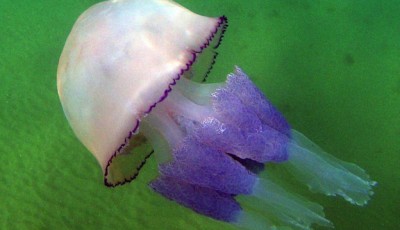Record year for jellyfish in South West waters
Conservation experts said barrel jellyfish have been spotted in bulks along the UK coastline this year for the second consecutive year.
The Marine Conservation Society said this year was set to be another record breaker as by July – before the peak month of August – there were already more than 1,000 reports of sightings of jellyfish across the UK made by members of the public.
Huge numbers of mauve stingers have also been reported in some places, while the rare and unsafe Portuguese Man O’ War has been washing up on beaches on the south-west coast.
The MCS Jellyfish Survey started in 2003 and involved thousands amongst the sea and beach-going public reporting their jellyfish encounters online at the MCS website. According to the survey, 2013 was a record year, with over 1,000 reports involving hundreds of thousands of jellyfish.
“Our National Jellyfish Survey suggests significant recent rises in the numbers of some jellyfish species in UK seas, most notably the barrel”.
“The million-dollar question is why is this happening? At the moment we just don’t know”, says Dr Peter Richardson, MCS Biodiversity and Fisheries Programme Manager.
The barrel jellyfish normally make up 10 per cent of the charity’s annual recorded sightings but past year they accounted for 40 per cent.
However, huge “smacks” of jellyfish are not a new phenomenon, with blooms of the creatures appearing in the fossil record as long as 500m years ago. Moon jellyfish blooms, for instance, has resulted in the closure of nuclear power stations in the U.K which led to the industry making investments on remote sensing mechanisms that aims to detect increases in jellyfish near power plants.
Sightings of blue jellyfish were also reported in May, and it was seen all over the UK by July.
Although mostly feared by swimmers and beach-goers for their painful sting, jellyfish have further-reaching environmental and economic consequences.
The organisation is calling for more monitoring and research to discover what the increase tells us about the condition of the sea.
“People are fascinated by jellyfish and that’s why our survey is one of our most successful citizen-science projects”, says Dr Richardson.
Richarson said that that the government should commission dedicated research and monitoring so as to find answers about what is happening with the number of jellyfish, why this is happening and what will be its implications on the seas.









